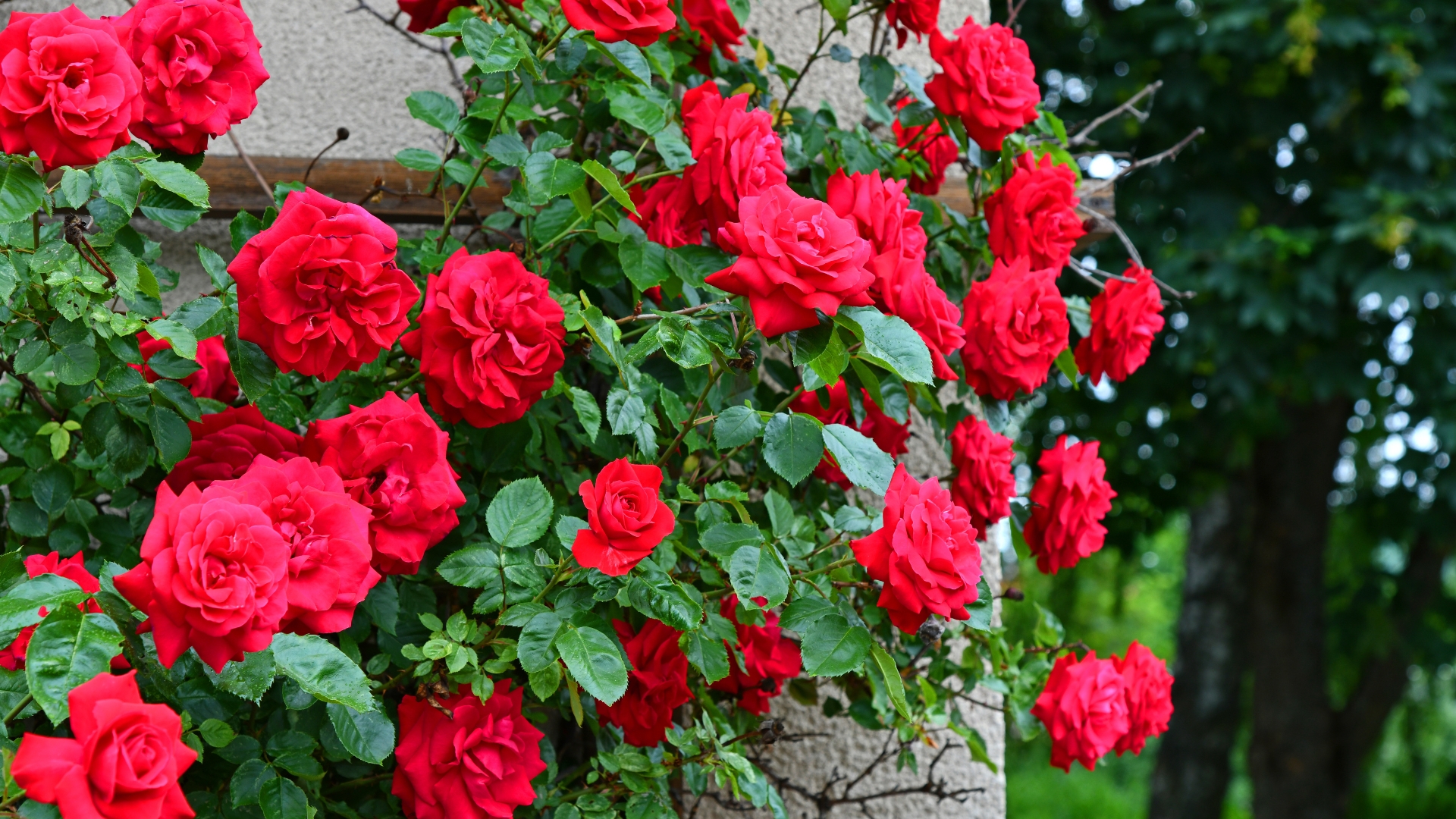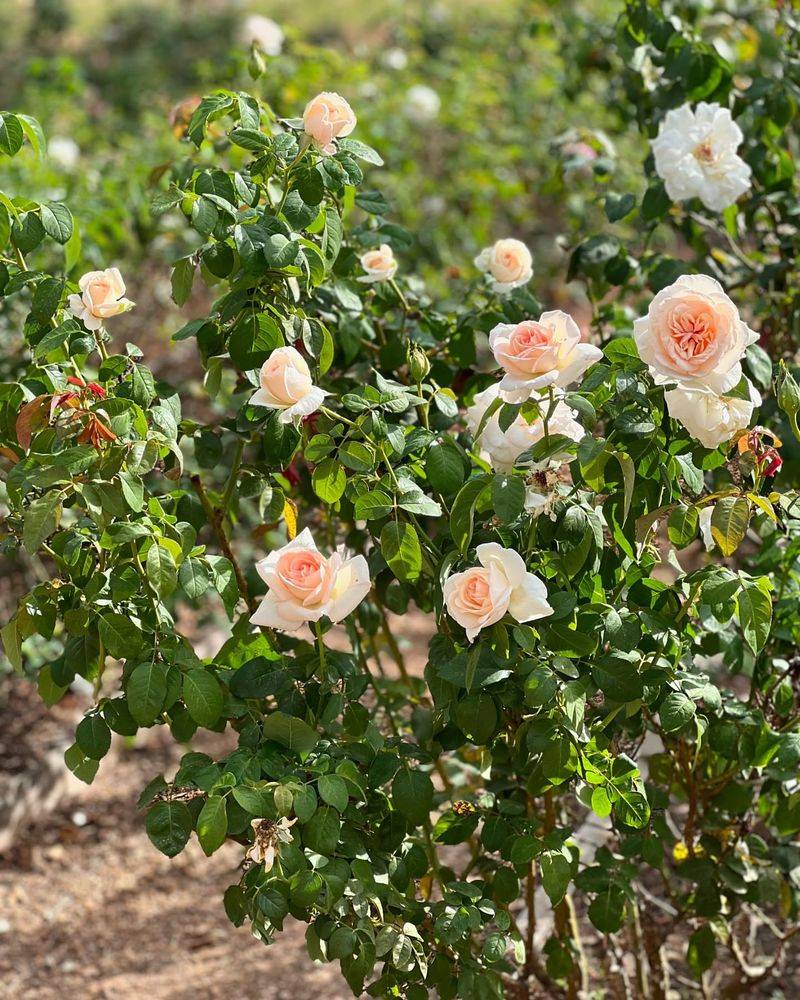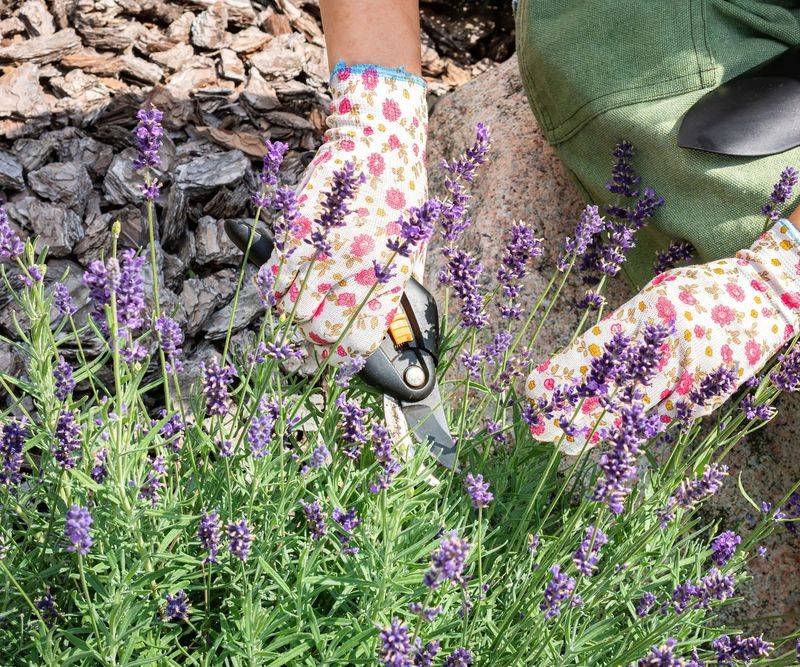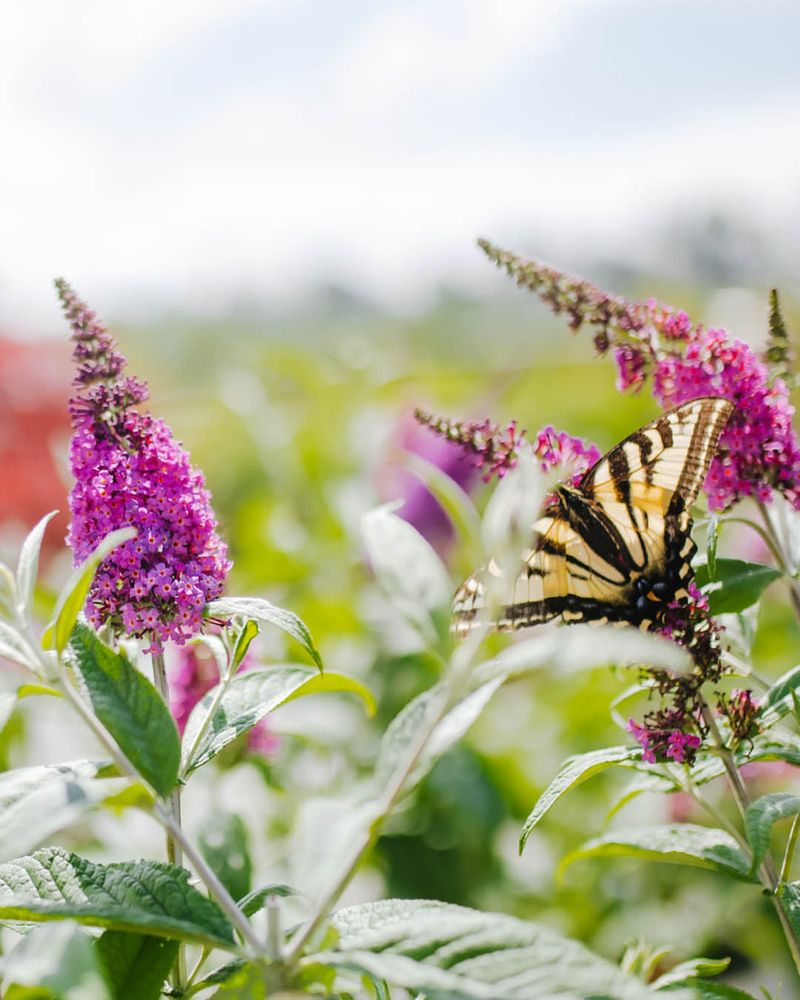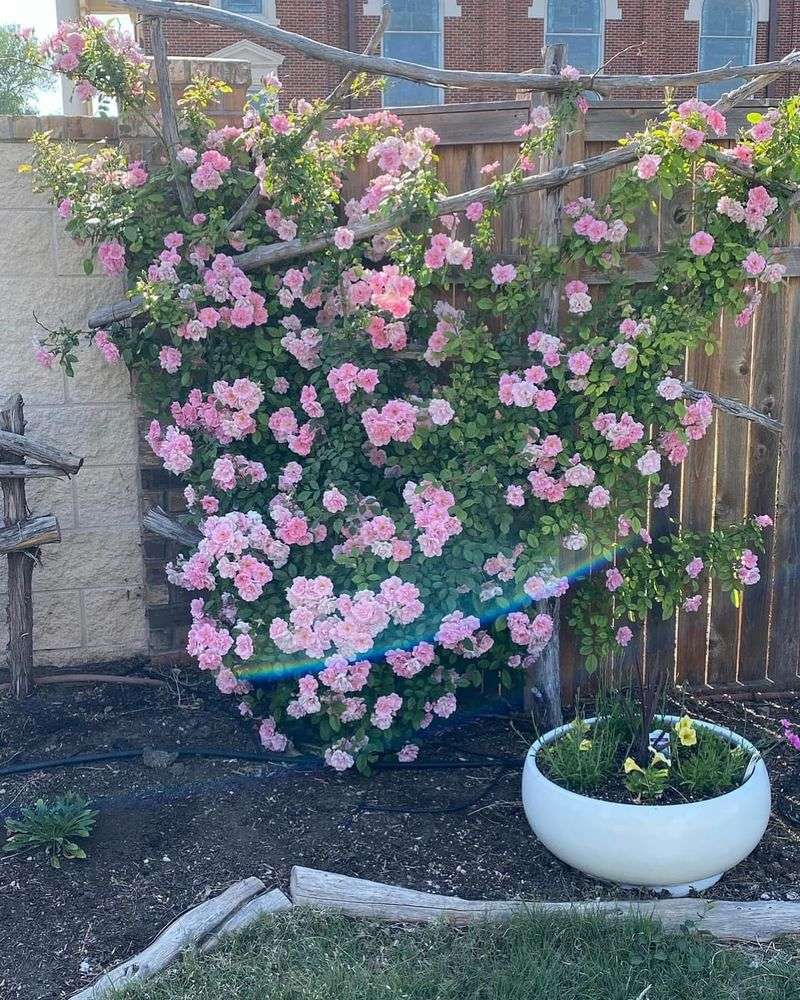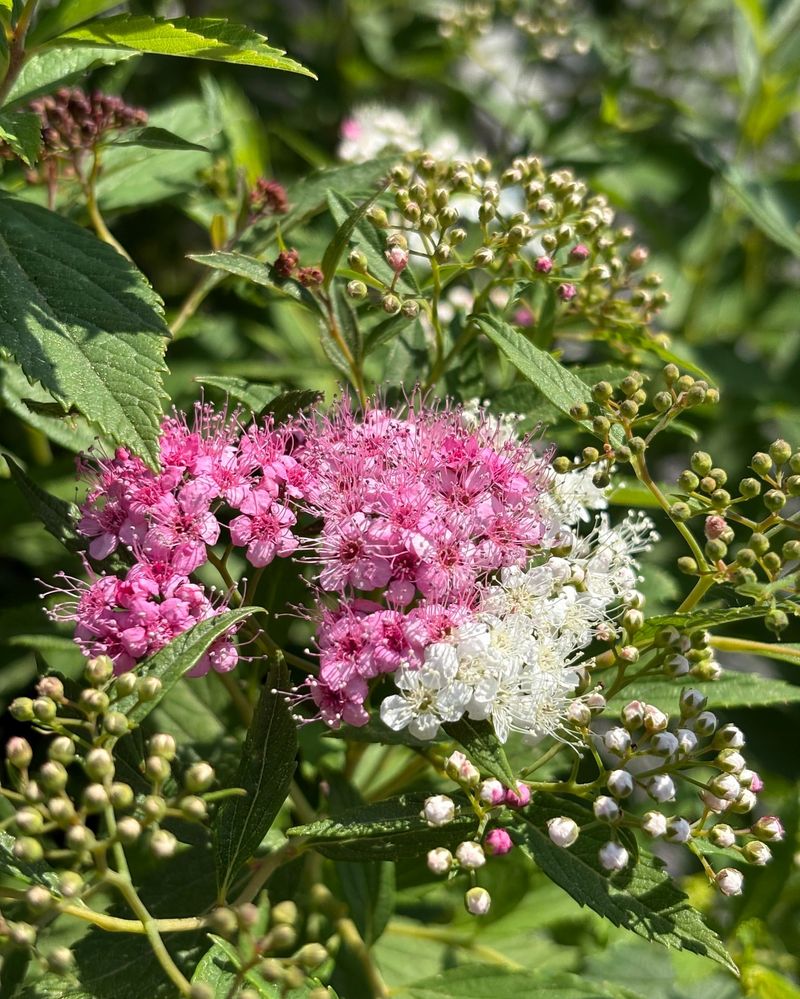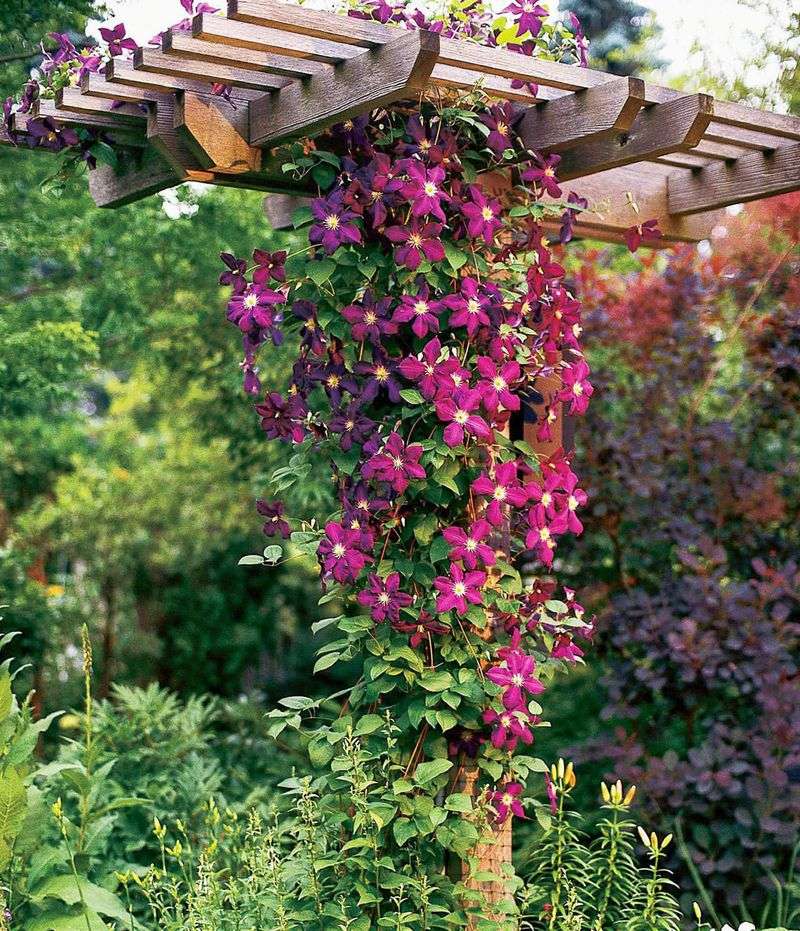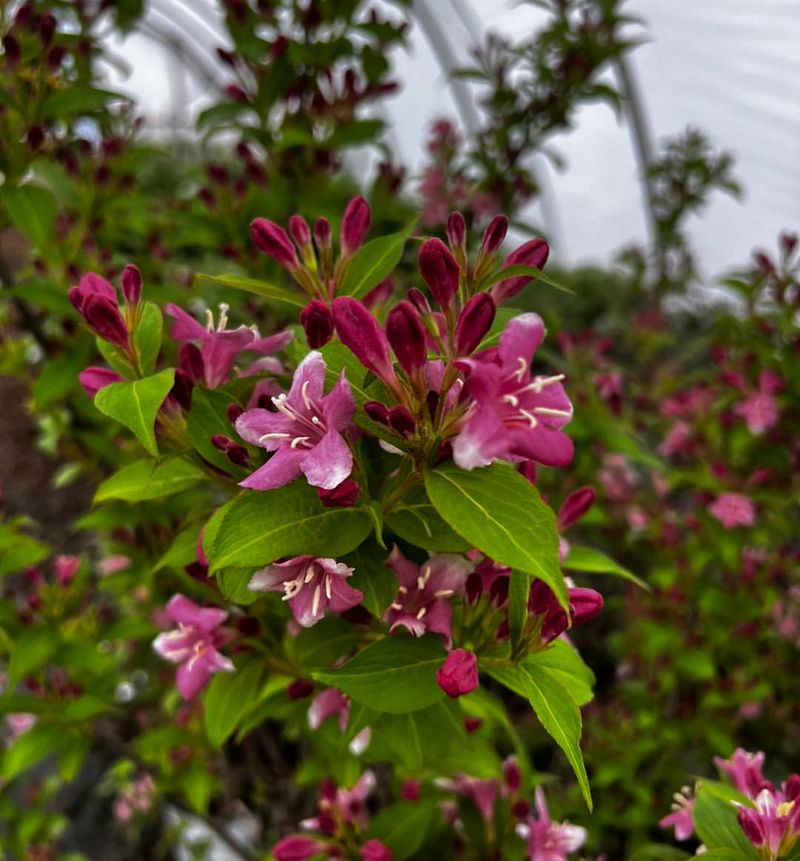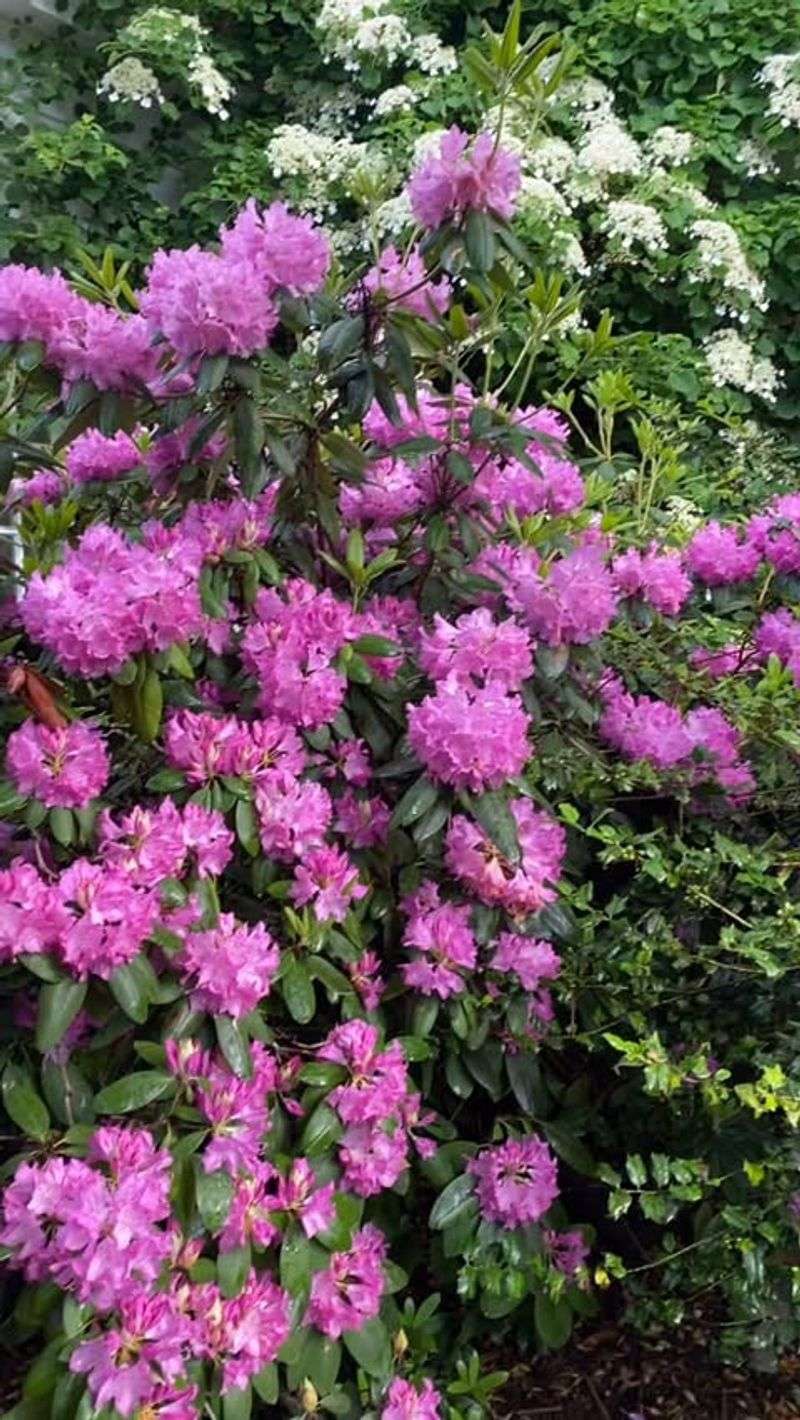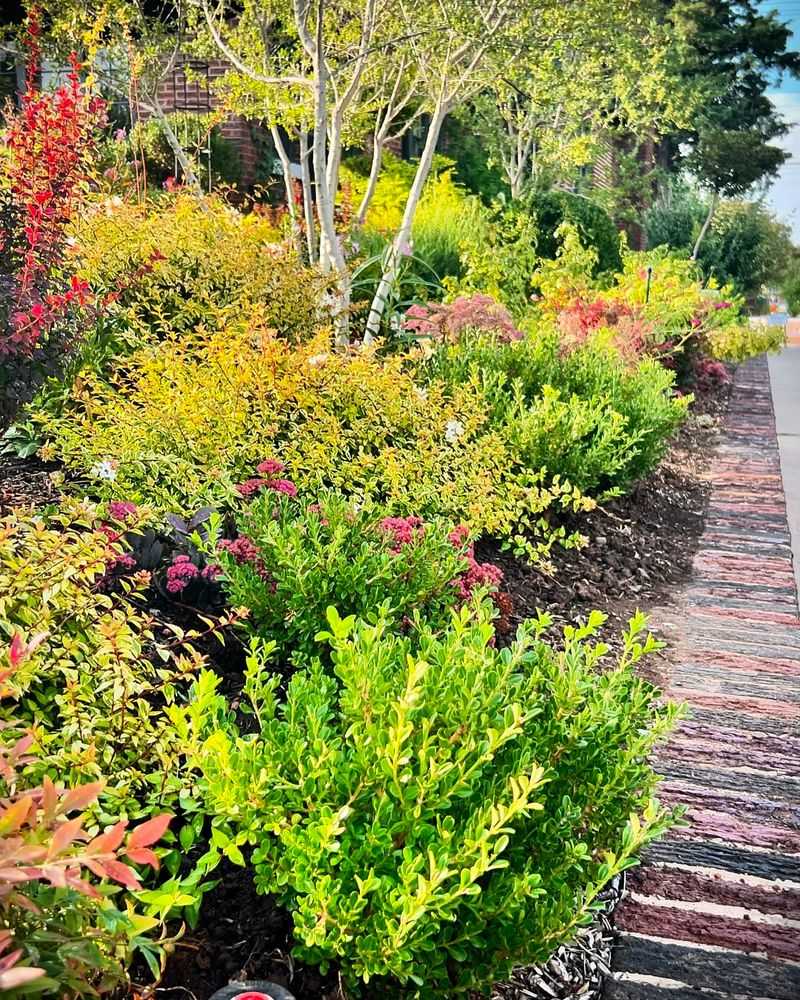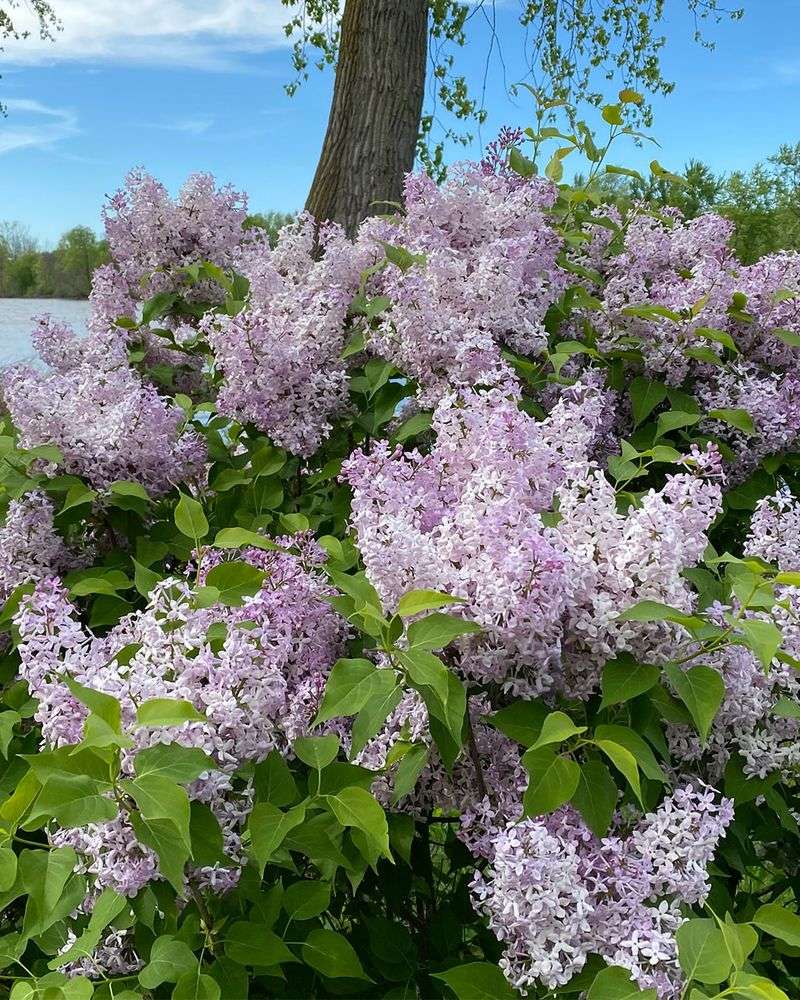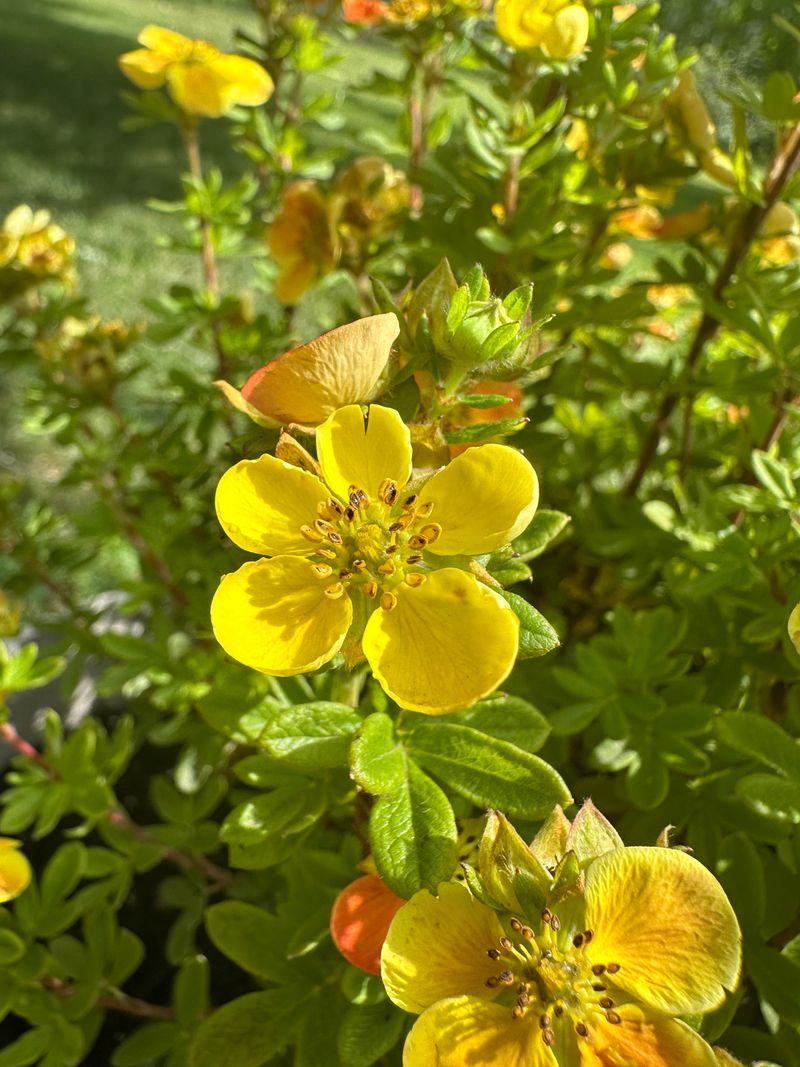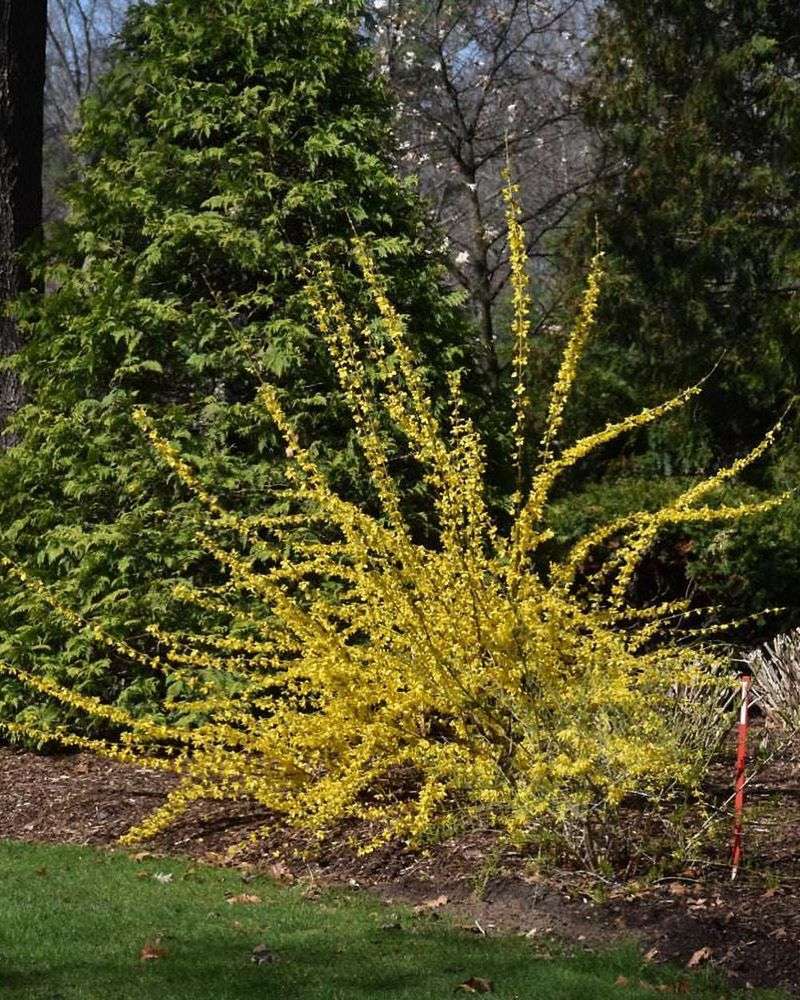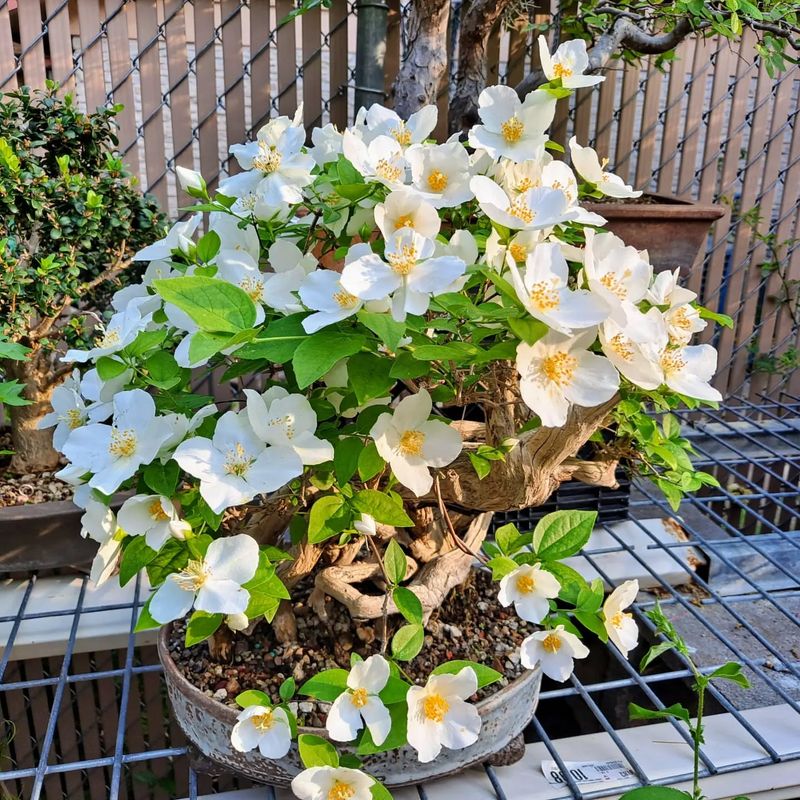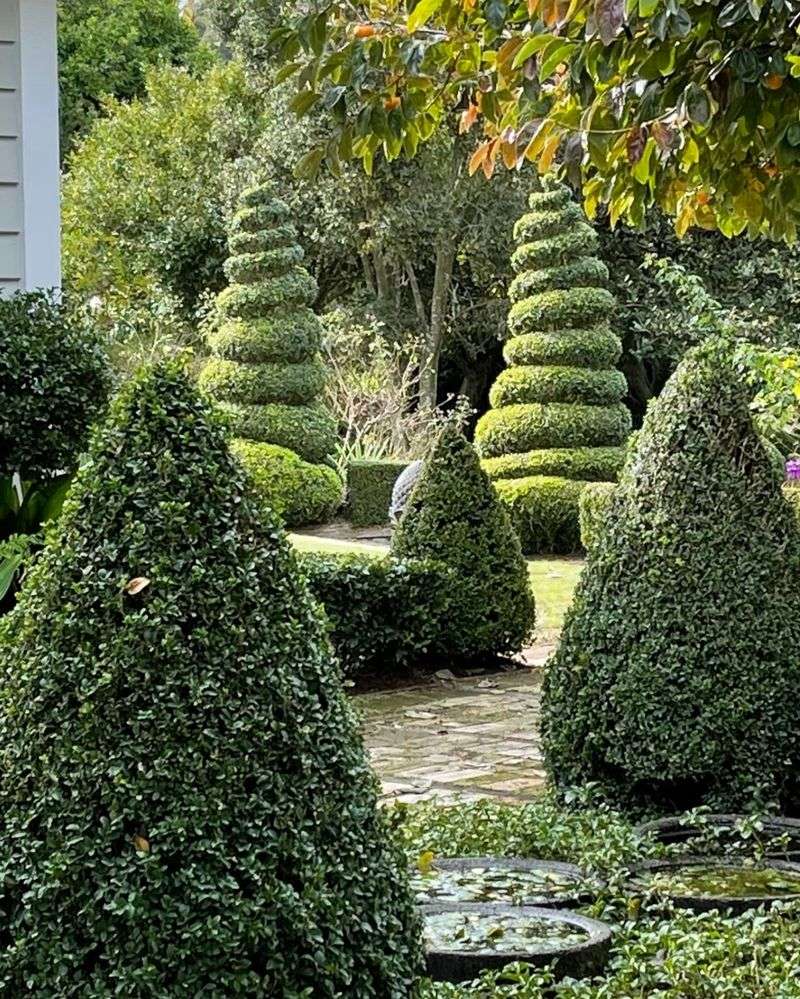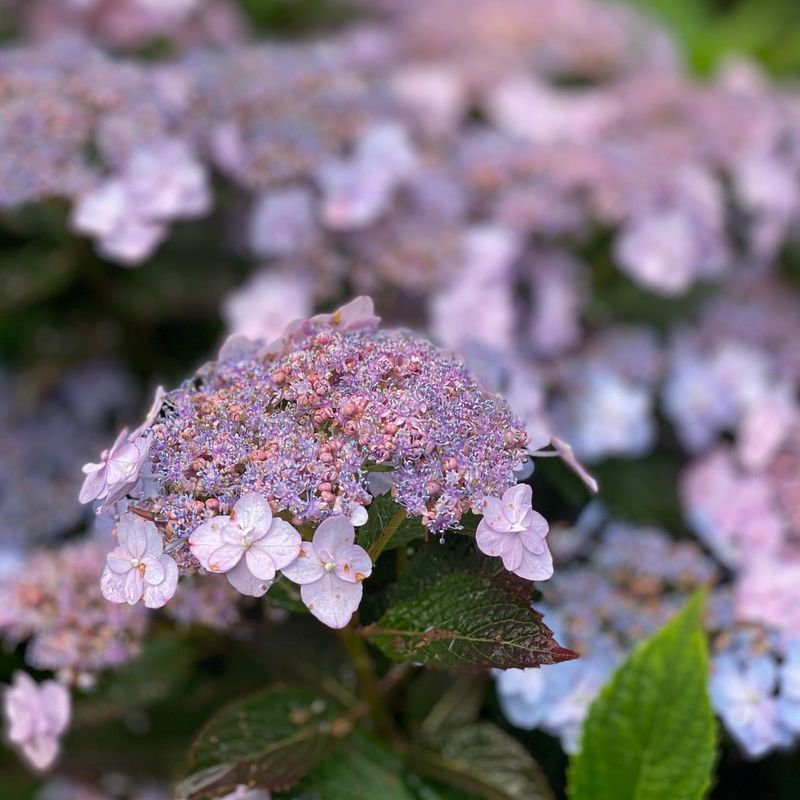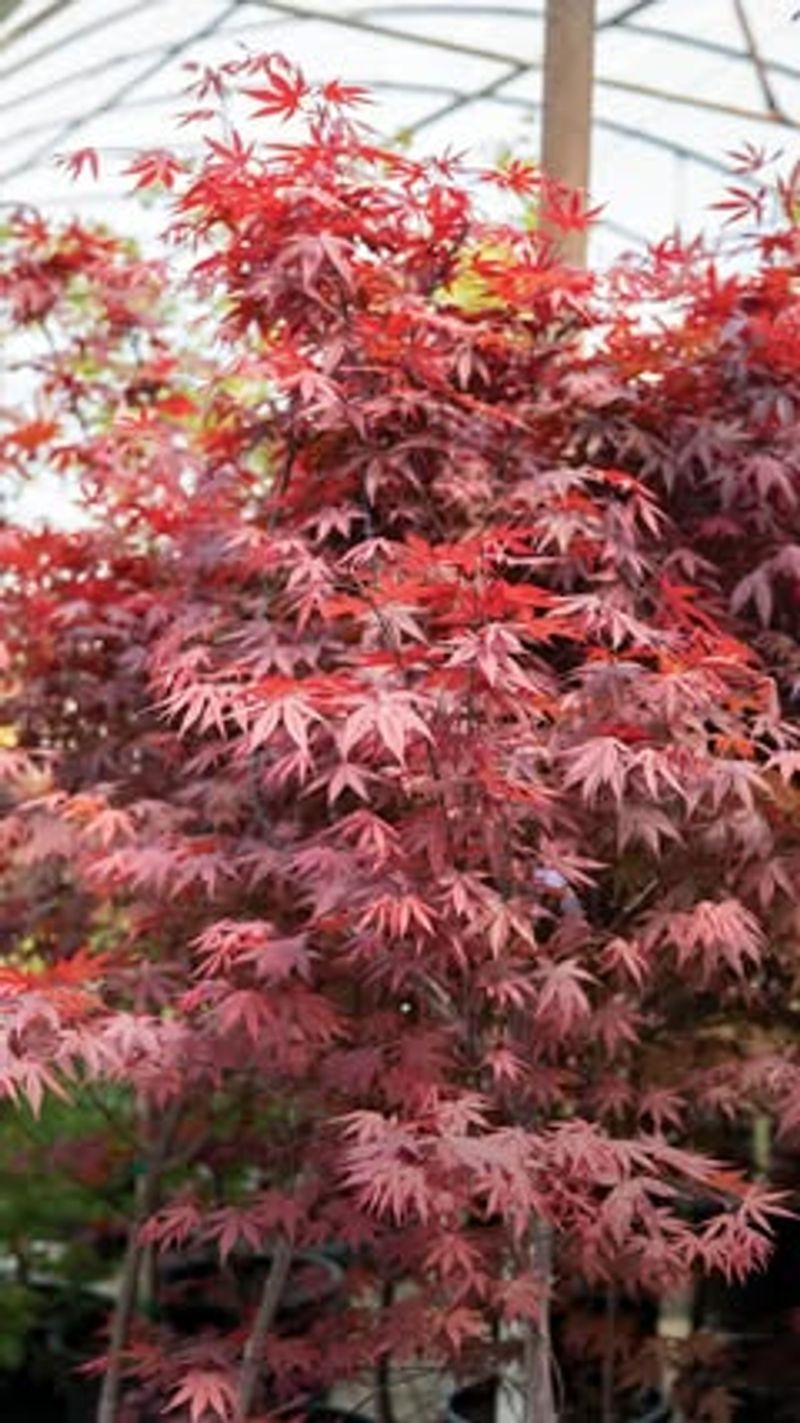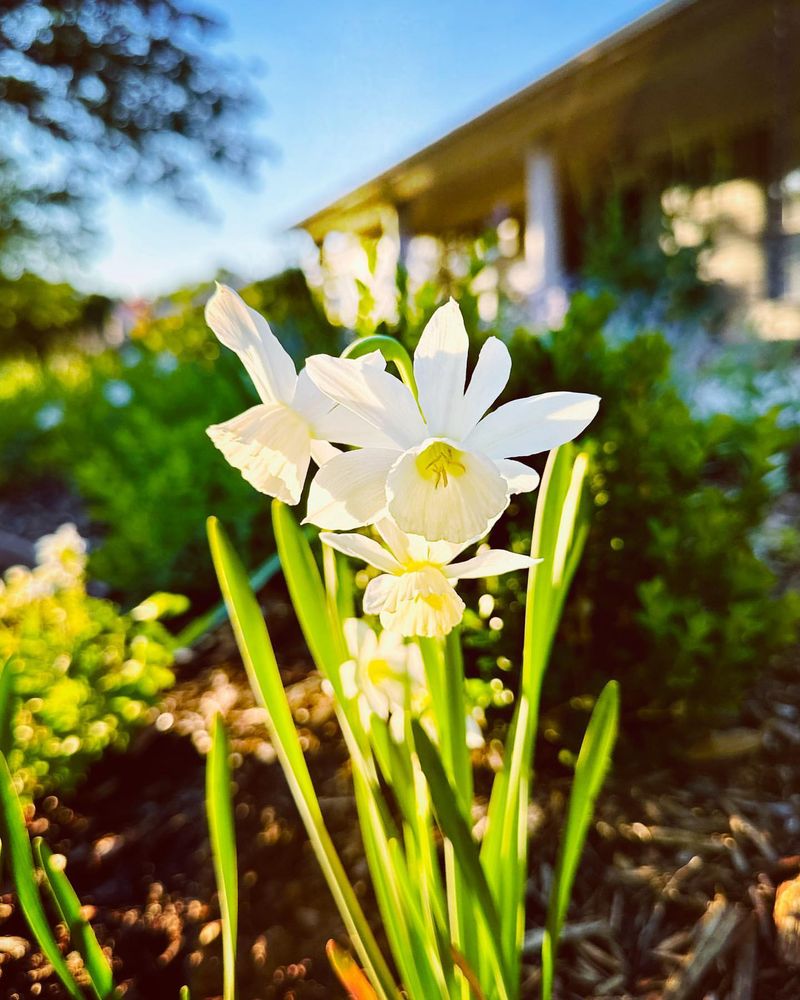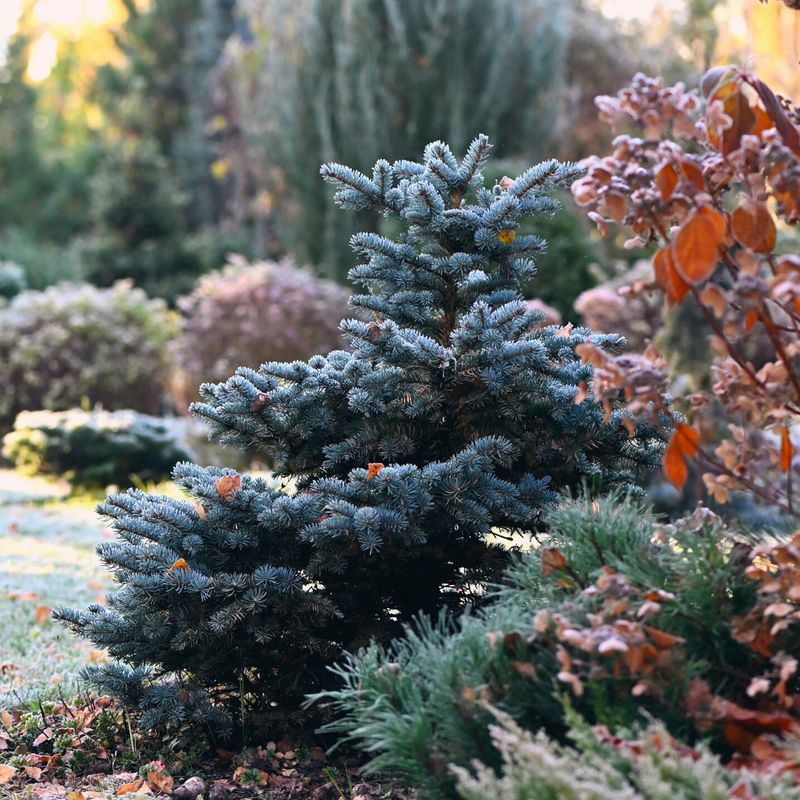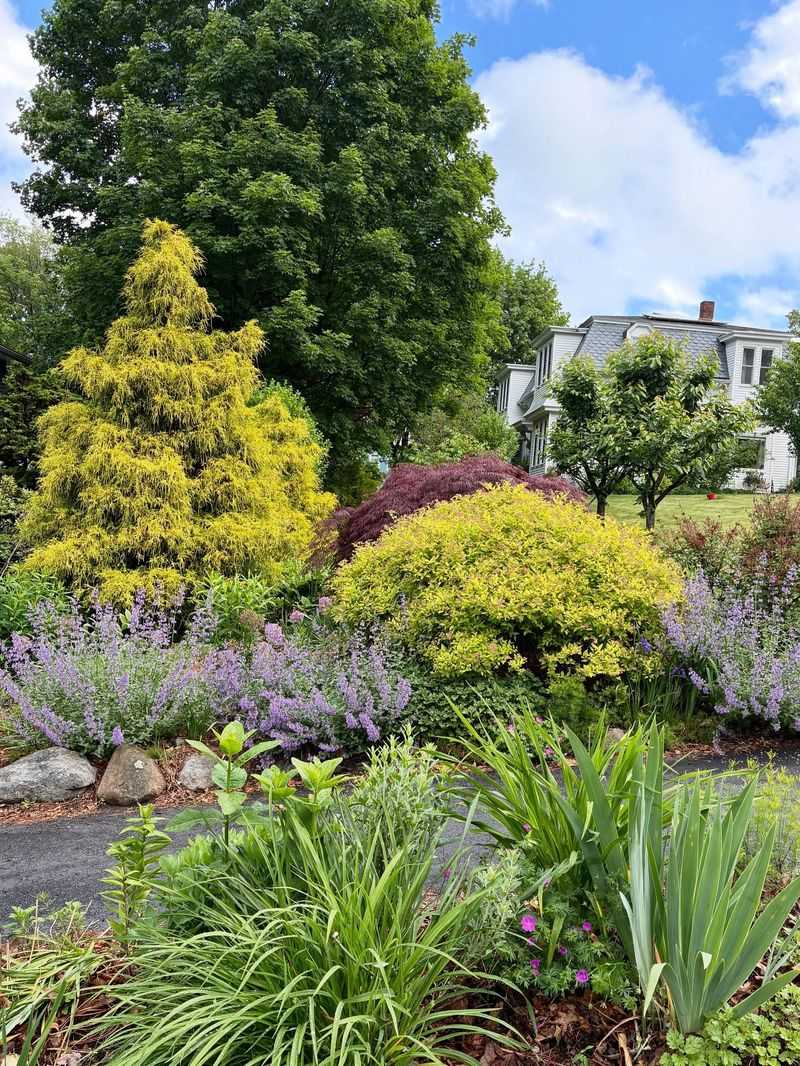Mid-summer can make or break a garden, and timing is everything—especially when it comes to pruning. I’ve learned the hard way that trimming too early (or too late) can leave plants stressed, stunted, or bloomless.
July is the sweet spot for a handful of flowers and shrubs that thrive with a mid-season cut. But not everything should meet the shears just yet. Here are 14 plants to prune now—while there’s still time—and 5 that are better left alone.
1. Rose Bushes Need a Mid-Summer Haircut
Most roses benefit from a light trim in July to encourage a second flush of blooms. Cut back spent flowers to the first five-leaflet leaf, removing about 1/4 inch above an outward-facing bud. This technique stimulates new growth and more flowers.
Roses pruned now will reward you with fresh blooms in late summer. Remember to use sharp, clean pruners to prevent disease spread. A gentle summer pruning also helps maintain the plant’s shape without the harsh cutting back that happens in early spring.
2. Lavender Loves a Post-Bloom Trim
Once lavender finishes its first flowering cycle, grab your pruners. A light shaping now prevents the plant from becoming woody and promotes a possible second bloom. Simply cut back about one-third of the current year’s growth, being careful not to cut into the woody stems.
Summer-pruned lavender maintains a neater appearance and stays healthier longer. The aromatic clippings can be dried for sachets or potpourri. This mid-summer attention extends the plant’s life by years and keeps it from splitting open in heavy snow or rain.
3. Butterfly Bush Demands Deadheading
Butterfly bushes respond dramatically to mid-summer pruning. Removing spent flower clusters before they set seed redirects the plant’s energy into producing new blooms rather than seeds. Cut the faded flower spikes back to the first set of leaves.
Regular deadheading through July keeps these butterfly magnets blooming until frost. An added bonus: pruning now helps control their sometimes invasive nature by preventing seed dispersal. The plant’s response is almost immediate – expect to see new flower buds forming within days after trimming.
4. Climbing Roses Need Direction Now
July is perfect for training and pruning climbing roses. Remove any dead or diseased canes completely. Then lightly trim side shoots that have finished flowering, cutting back to 2-3 buds from the main cane.
This encourages lateral growth and more flowers later. Take time to secure new growth to supports while stems remain flexible. Unlike bush roses, climbers shouldn’t be cut back severely – their main canes provide the framework for next year’s display.
5. Spirea Shrubs Shine After Shearing
Spring-flowering spireas like Bridal Wreath benefit from a quick trim right after their blooms fade. July marks your last chance to shape these graceful shrubs before they set next year’s flower buds. Use hedge shears for a light overall trim, removing about one-third of the current season’s growth.
Summer-blooming varieties like ‘Anthony Waterer’ can be pruned more severely to encourage fresh foliage and extended flowering. A rejuvenation trim now helps maintain the shrub’s attractive arching form and prevents the center from becoming woody and bare.
6. Clematis Vines – Group 2 Needs Attention
Group 2 clematis (large-flowered hybrids that bloom in early summer) benefit from light pruning in July. Cut back stems that have finished flowering to just above a strong pair of buds. This encourages a second, smaller flush of blooms in late summer.
Don’t go overboard – remove only about one-quarter of the vine’s growth. Careful pruning now helps maintain the plant’s vigor while controlling its size. Remember that different clematis groups require different pruning approaches – only Group 2 benefits from this mid-summer trim.
7. Weigela Rewards Mid-Summer Pruners
Weigela shrubs that flowered in spring can be shaped now to maintain their graceful form. Cut back overly long branches by about one-third, making cuts just above outward-facing buds. Remove any dead or damaged branches completely.
This mid-summer pruning stimulates new growth that will bear next year’s flowers. Some newer varieties may produce a modest second bloom after trimming. Weigela responds well to pruning, so don’t be afraid to shape it according to your garden’s needs.
8. Rhododendrons Need Deadheading Only
July is perfect for removing spent flower clusters from rhododendrons and azaleas. Snap off the faded blooms and developing seed pods with your fingers or pruners, being careful not to damage the new growth emerging just below them.
This simple maintenance prevents energy waste on seed production. More importantly, it makes room for next year’s flower buds that will form by late summer. Avoid any actual pruning of branches now – rhododendrons set next year’s buds soon, and cutting them off means no flowers next spring.
9. Boxwood Benefits From Light Shaping
July offers a perfect opportunity to shape boxwood hedges and specimens. The spring growth flush has hardened off, and new growth will have time to mature before winter. Use sharp shears to maintain clean lines, cutting back just the outer inch or two of new growth.
Avoid heavy pruning that exposes the interior branches to direct sun, which can cause scorching. A light trim now helps maintain density while controlling size. For formal gardens, this mid-summer shaping keeps geometric forms crisp and defined until the growing season ends.
10. Lilacs Require Immediate Post-Bloom Pruning
If you haven’t pruned your lilacs yet, act quickly before July ends. Remove spent flower clusters by cutting just above where new shoots emerge. For older, overgrown specimens, remove up to one-third of the oldest stems at ground level to encourage rejuvenation.
Pruning lilacs after mid-summer means sacrificing next year’s blooms, as flower buds form on old wood shortly after this month. The sweet-smelling flowers appear on year-old wood, so timing matters tremendously. This late-July pruning represents your last chance until next year’s flowering cycle completes.
11. Potentilla Flourishes With Mid-Season Haircut
These hardy flowering shrubs benefit from a light shearing in July to remove spent blooms and stimulate fresh flowering. Cut back about one-third of the current season’s growth using hedge shears for a quick, overall trim.
Potentilla responds with renewed vigor and continued flowering until frost. Unlike many flowering shrubs, it blooms on new growth, making summer pruning beneficial rather than detrimental. The plant’s naturally rounded form becomes more compact and flower-dense after this mid-season attention.
12. Forsythia’s Last Chance for Shaping
July marks your final opportunity to prune forsythia without sacrificing next spring’s golden display. These early-bloomers form flower buds on old wood by early August. Cut back overly long branches by one-third, and remove older stems at ground level to encourage fresh growth.
Neglected forsythia benefits from more dramatic renovation, removing up to one-third of the oldest stems completely. The resulting open structure allows better air circulation and light penetration. Remember that any pruning after July will reduce next spring’s spectacular yellow show.
13. Mock Orange Needs Post-Bloom Cleanup
After enjoying the sweet citrus fragrance of mock orange flowers, July pruning helps maintain the shrub’s form. Remove spent flowering stems by cutting back to strong side shoots or main branches. For older plants, remove up to one-quarter of the oldest stems at ground level.
This rejuvenation prevents the center from becoming woody and bare. Mock orange blooms on year-old wood, so pruning now allows time for new growth to mature and set flower buds for next year. The shrub’s naturally arching form becomes more graceful with this annual attention.
14. Evergreen Hedges Welcome Summer Shaping
Yew, juniper, and arborvitae hedges benefit from light trimming in July. Their spring growth has hardened off, and new growth will have time to mature before frost. Use sharp shears to maintain clean lines, tapering the sides slightly so the bottom remains wider than the top.
This shape ensures light reaches all parts of the hedge. Avoid cutting into old wood that lacks needles or foliage – most evergreens won’t regenerate from bare branches. A careful summer trim maintains density and formal appearance through the rest of the growing season.
15. SKIP: Hydrangeas Need Patience Now
Hold those pruners! Most hydrangea types form next year’s flower buds on old wood during late summer. Cutting now removes these developing buds and eliminates next year’s blooming potential. Only spent flowers should be removed, and even those are best left on certain varieties.
The large mophead and lacecap hydrangeas are particularly sensitive to timing. Their faded blooms actually provide winter protection for emerging buds. If you’re unsure which type you have, the safest approach is hands-off until after flowering next year.
16. SKIP: Japanese Maples Resent Summer Cutting
These elegant trees experience significant stress when pruned during summer’s heat. Their delicate foliage and thin bark make them vulnerable to sunscald if interior branches are suddenly exposed. Any necessary pruning should wait until late fall or winter dormancy.
Summer pruning can trigger unwanted growth flushes that won’t have time to harden off before winter. This late growth becomes susceptible to cold damage. If you absolutely must remove damaged branches, make minimal cuts and avoid taking off more than is necessary for safety.
17. SKIP: Spring-Flowering Bulbs Need Foliage
Though fading tulip, daffodil, and other spring bulb foliage may look untidy, resist the urge to cut it back before it yellows completely. Those leaves are busy making food that’s stored in the bulbs for next year’s flowers.
Premature cutting reduces flowering potential and can weaken the bulbs over time. If the messy look bothers you, consider planting perennials nearby that will grow up and hide the yellowing foliage. By late July, most spring bulb foliage should be completely yellow and can be gently removed.
18. SKIP: Conifers Prefer Different Timing
Avoid pruning pine, spruce, and fir trees in mid-summer. Unlike deciduous trees, most conifers have a limited capacity to generate new growth from old wood. The ideal time for shaping is early spring just as new growth begins.
Summer pruning can leave brown stubs that never regrow foliage. If you must remove damaged branches, understand that the resulting gaps may remain permanently. The exception is hedge-forming species like yew, which can handle light summer trimming of current year’s growth only.
19. SKIP: Oak Trees Face Disease Risk Now
Summer pruning of oak trees can be downright dangerous – to the trees themselves. Fresh cuts during warm months attract beetles that spread deadly oak wilt disease. Many communities actually prohibit oak pruning between April and October for this reason.
If storm damage forces emergency pruning, seal all cuts immediately with tree wound dressing. Otherwise, save oak pruning for the coldest winter months when disease-carrying insects are dormant. The tree’s health depends on proper timing more than most other landscape plants.

